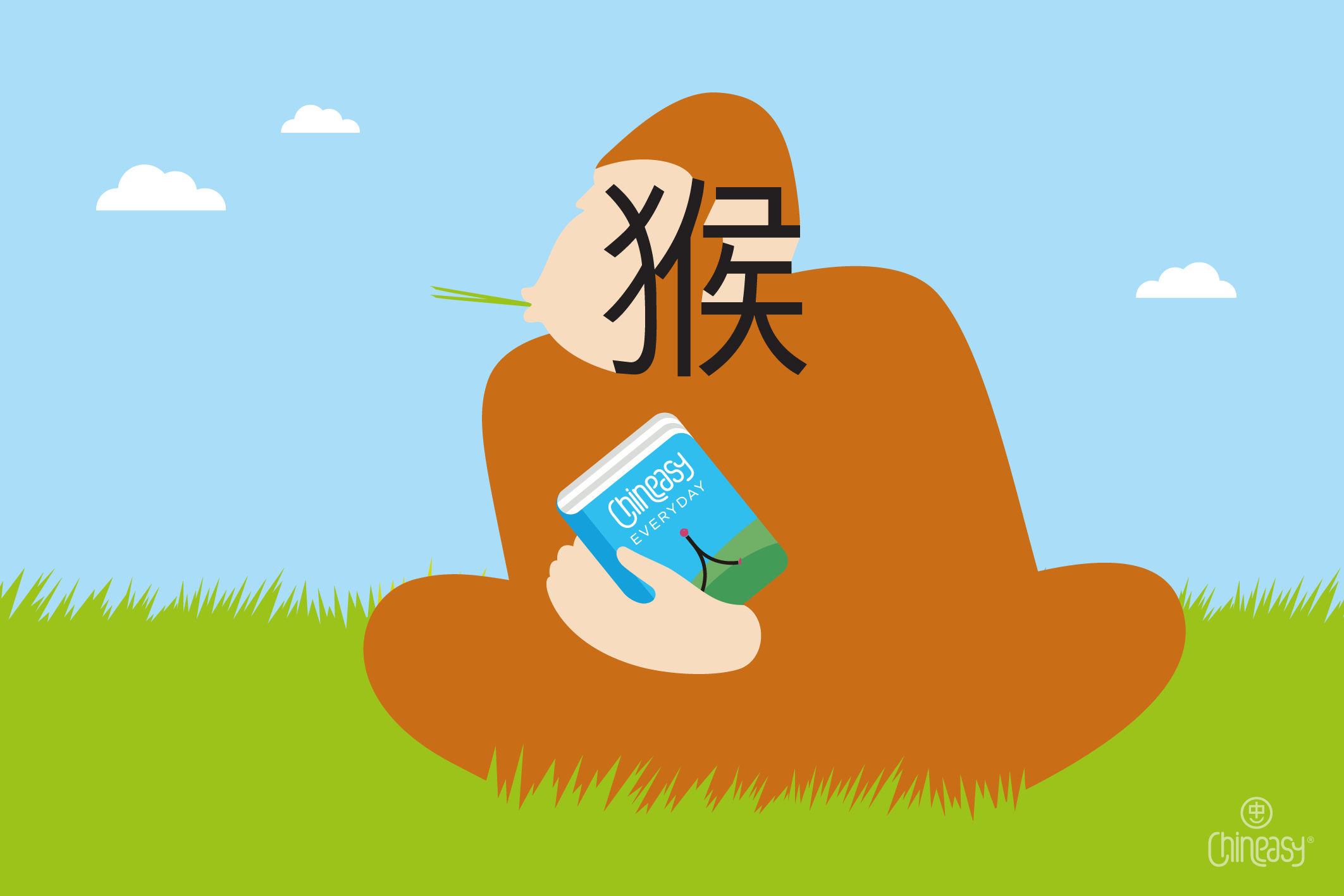Have you ever thought about how the environment influences not just human evolution but also language? Scientists believe that weather and climate have played a role in shaping human development, including the words we use to describe nature.
Early humans didn’t have many words for weather conditions, but over time, as they observed the sky, rain, wind, and other elements, they created a rich vocabulary to express them.
In Chinese, many weather-related words include one or more of the following key characters: 天 (sky/day), 气 (air), 雨 (rain), 云 (cloud), and 风 (wind). Learning these five essential characters is a great way to build a strong foundation for discussing the weather in Chinese!
Sky 天
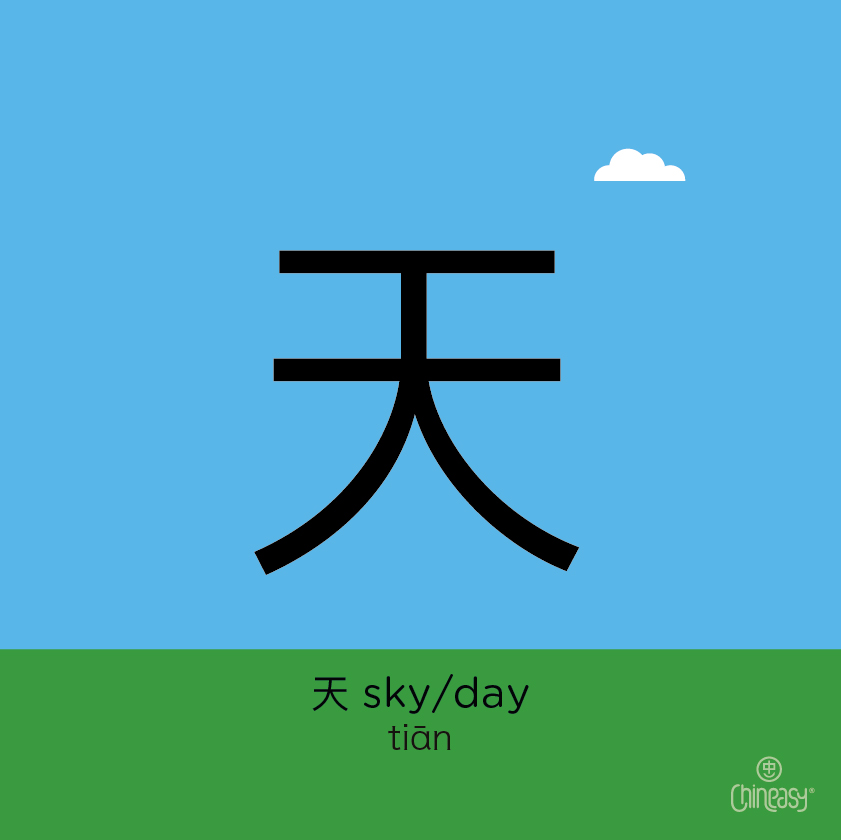
The Chinese character 天 (tiān) originally appeared in oracle bone script, the earliest known form of Chinese writing. Oracle bones—turtle shells and animal bones—were used in ancient divination rituals to seek guidance from the heavens.
In its earliest form, the character depicted a person with a large head. Over time, the head was simplified into a straight horizontal line, symbolizing the vast sky above.
Picture someone standing beneath the open sky, arms stretched wide—that’s the essence of 天.
Beyond meaning “sky,” 天 is also used to refer to “day” or “heaven” in Chinese.
📌 天 (tiān) – sky, day, heaven
Air 气
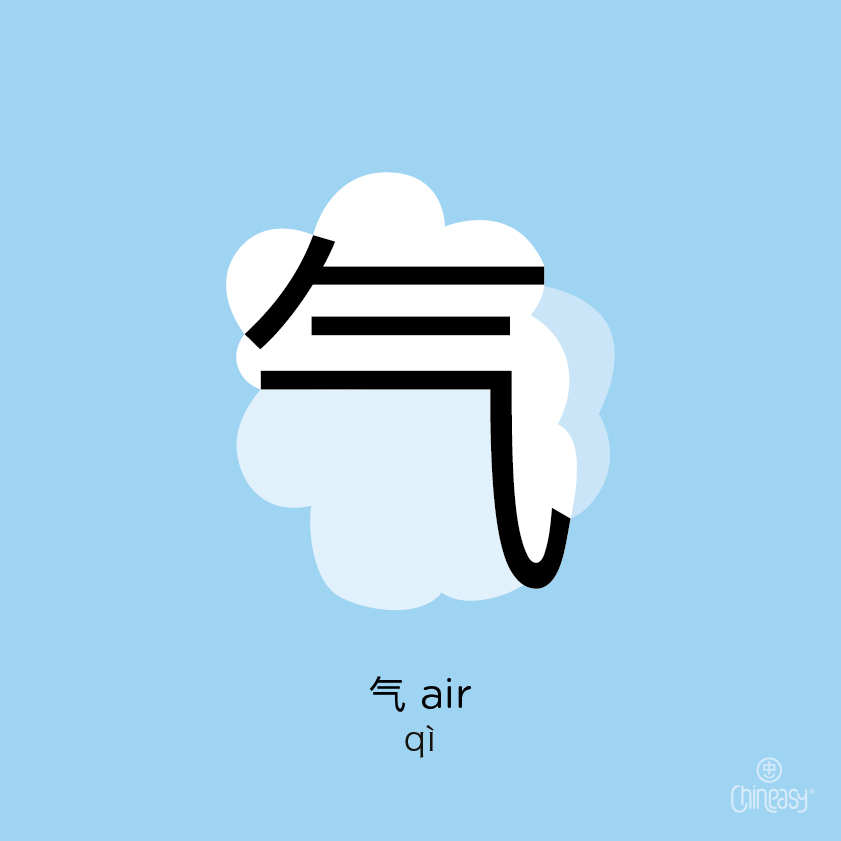
The character 气 (qì) originally depicted steam or vapor rising into the air.
Over time, its meaning expanded beyond just “steam” to include “air,” “anger,” and even “vital energy”—as in the concept of Qi in Qigong (气功, pronounced chee-gong), a traditional Chinese practice that focuses on breath and movement.
The traditional form of the character is 氣, which retains an extra component that represents the movement of air.
📌 氣/气 (qì) – air, anger, vital energy
Rain 雨
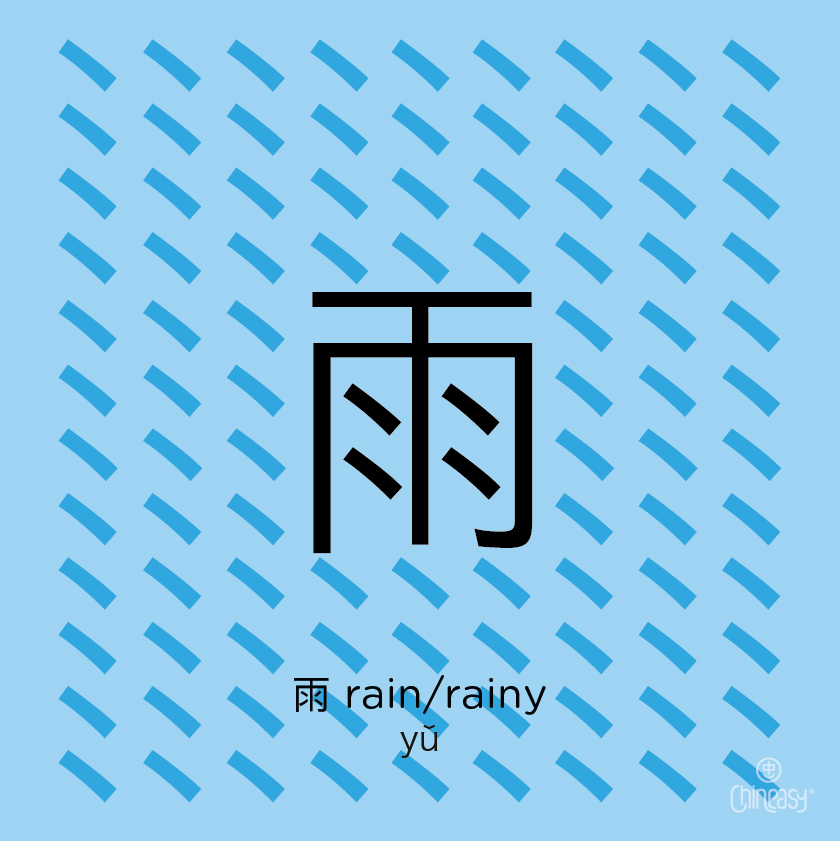
The character 雨 (yǔ) represents “rain” and visually reflects its meaning. In its earliest form, it consisted of only two elements:
- A horizontal stroke (一) at the top, symbolizing the sky.
- Several dots below, representing raindrops falling from the sky.
Over time, an enclosing component (冂) was added, shaping the character into its modern form.
One key difference between rain in English and 雨 in Chinese is that in English, “rain” can function as both a noun and a verb (e.g., It rains a lot). However, in Chinese, 雨 is only used as a noun (rain) or adjective (rainy).
📌 雨 (yǔ) – rain, rainy
Cloud 云
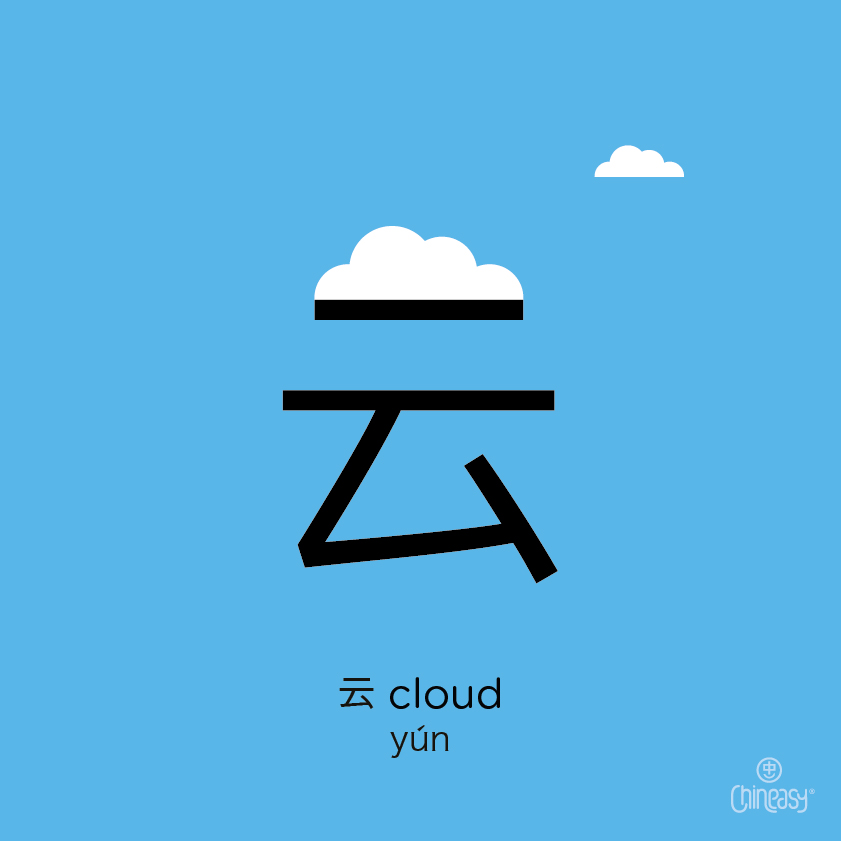
The character 云 (yún) means “cloud” and is the simplified form of the traditional character 雲.
The traditional version consists of two components:
- 雨 (yǔ; rain) – representing moisture.
- 云 (yún; cloud-like shapes) – giving the full meaning of “cloud.”
In ancient China, people closely observed the shape and color of clouds to predict the weather. This practice influenced agriculture and daily life.
Even today, clouds are a common element in traditional Chinese paintings, symbolizing nature’s beauty and the connection between heaven and earth.
📌 雲/云 (yún) – cloud
Wind 风
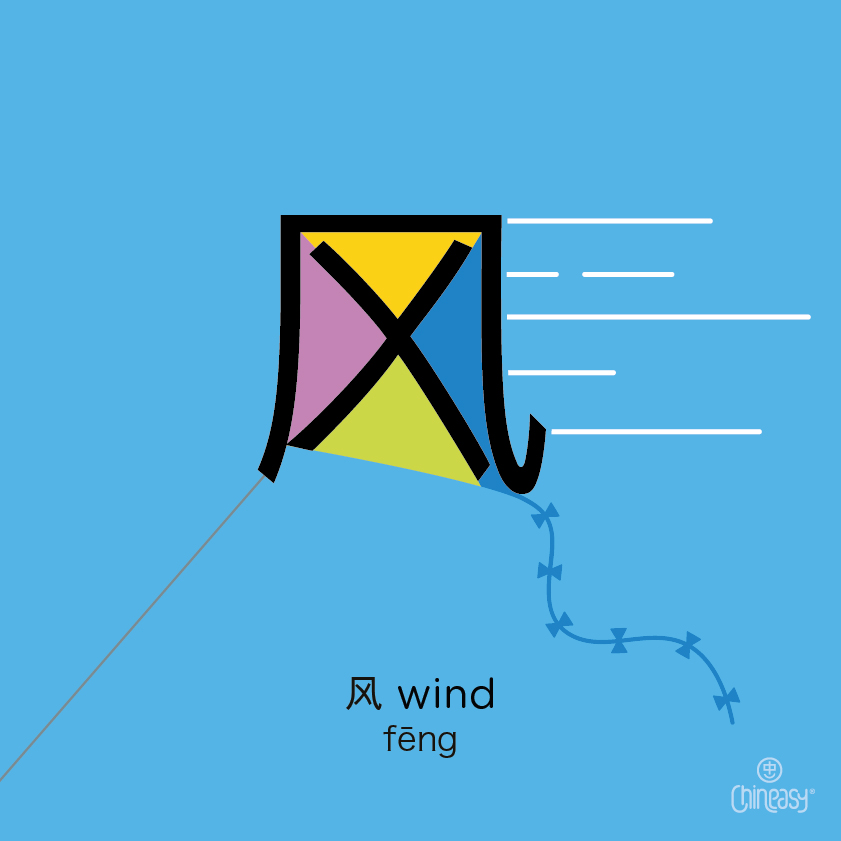
The character 风 (fēng) means “wind” and is the simplified form of the traditional character 風.
In the traditional form, the character contains 虫 (chóng; insect) inside. This reflects an early belief that when the wind blows, insects are born—a fascinating ancient interpretation of nature’s cycles.
📌 風/风 (fēng) – wind
Understanding these five essential Chinese characters for weather gives you a strong foundation for recognizing and learning more related words. Whether it’s the sky above, the wind that blows, or the rain that falls, these characters are deeply connected to nature and everyday life. Next time you check the weather, try thinking about it in Chinese.
